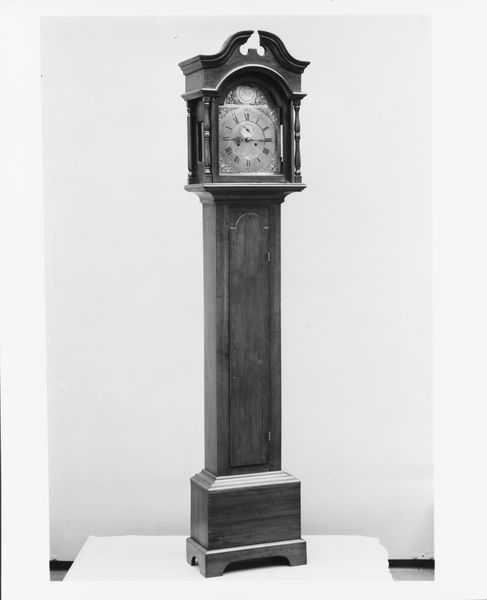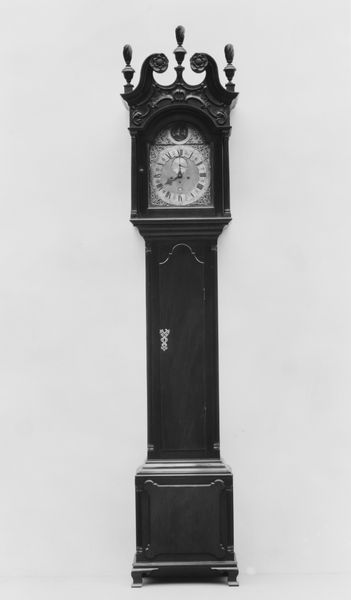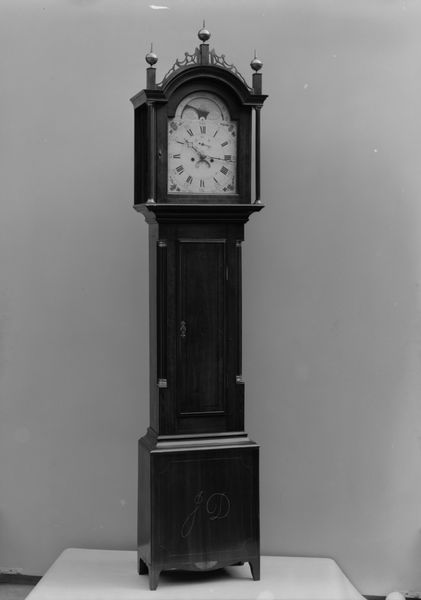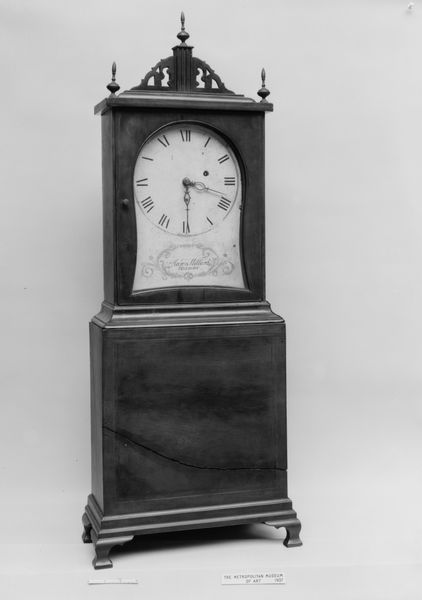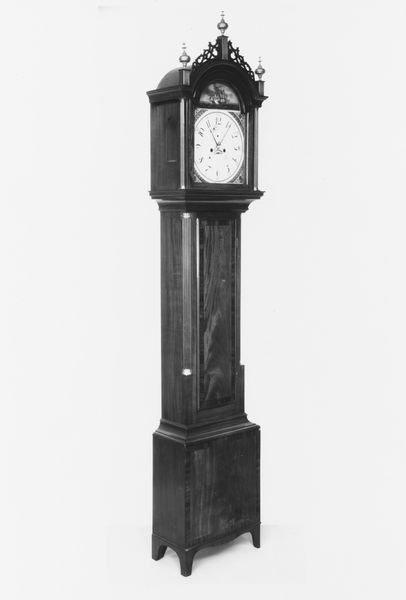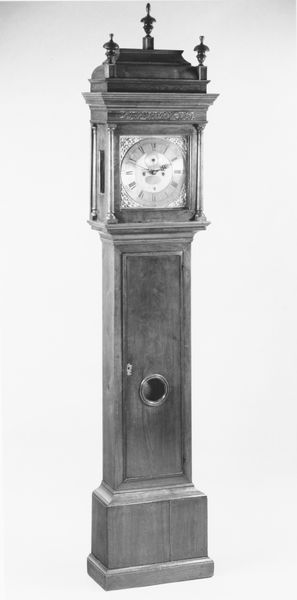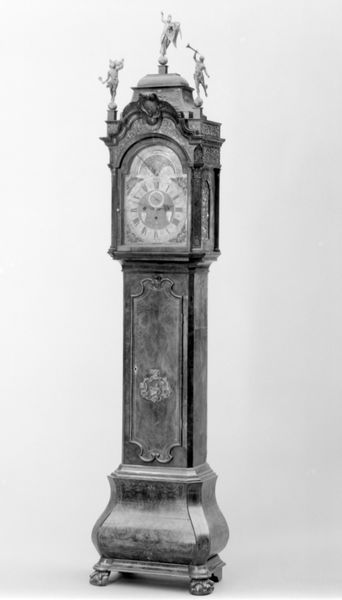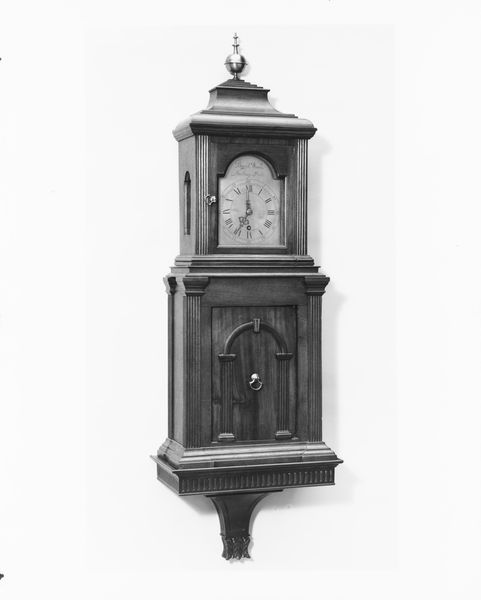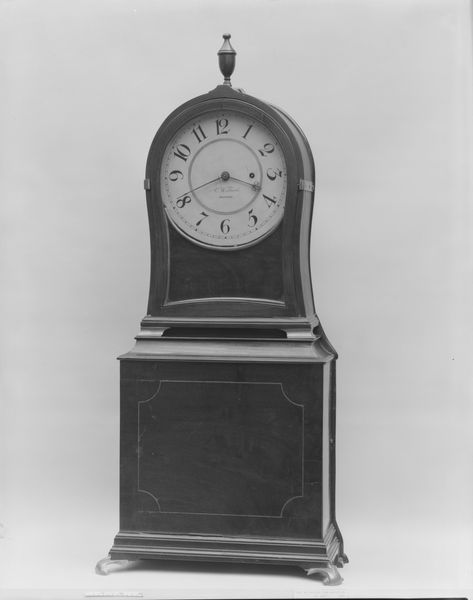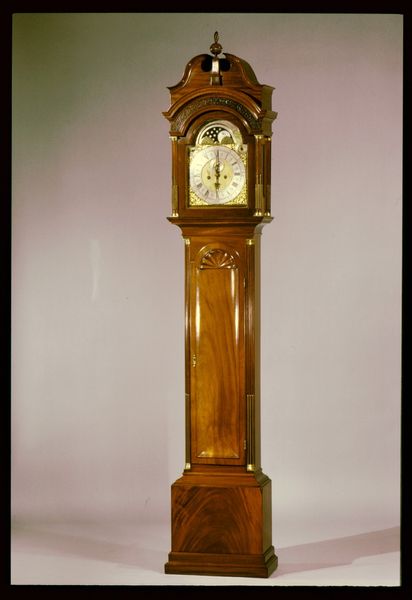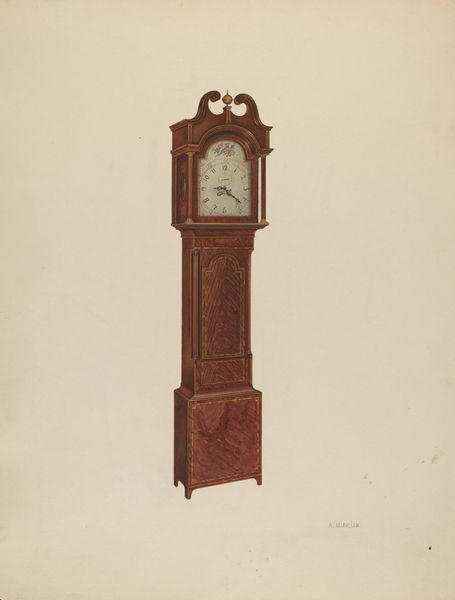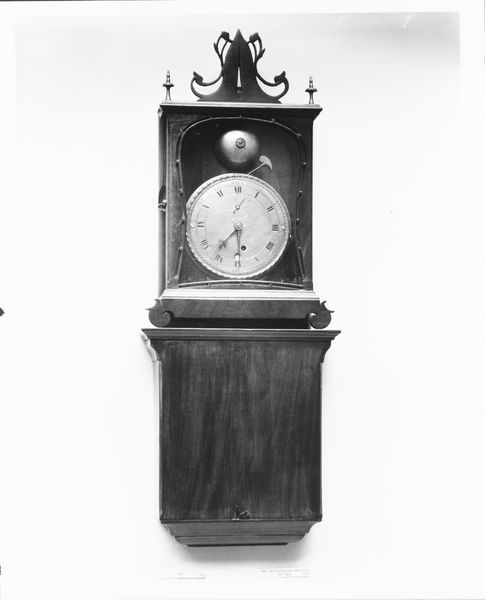
#
black and white photography
#
sculpture
#
sculptural image
#
black and white theme
#
unrealistic statue
#
framed image
#
black colour
#
black and white
#
monochrome photography
#
united-states
#
monochrome
Dimensions: H. 99 1/2 in. (252.7 cm)
Copyright: Public Domain
Curator: I'm immediately struck by its somberness, you know? Like a silent sentinel in a grand, echoing hall. Even in monochrome, it just breathes gravitas. Editor: We are looking at "Tall Clock," crafted by Nathan Storrs between 1800 and 1810. This particular example of American craftsmanship resides at the Metropolitan Museum of Art in New York. What makes it conjure such a mood for you? Curator: It’s that almost austere silhouette, but then you see the detailed marquetry— tiny explosions of light on dark wood—and the delicate spires. There's a tension between control and exuberance, I suppose. Editor: Absolutely. Tall clocks were more than just time-telling devices; they were status symbols. The clock becomes a commentary on temporality but also a celebration of American ingenuity. Notice the swan’s neck pediment, a classic touch. How does this level of detail speak to issues of class or social standing? Curator: It’s funny, isn’t it? Something so… regimented, ticking away, marking time, is also trying to reach for something… transcendent. Editor: Clocks enforced a more disciplined approach to life and, certainly, controlled labor within industrializing economies, especially through clock towers visible from factories. In contrast, a grandfather clock such as this speaks to aspirations of the bourgeoisie in the new nation of the United States. Storrs may have seen this commission as marking personal achievements in time, work, or societal contributions. Curator: Well, thinking of those early factories, that makes me imagine the relentless march of gears, an unyielding pulse against a more natural rhythm… the tension you described is visible here in the material itself. But that could simply be the passing of time, I admit, and all the changes, small cracks and repairs on the surface and innerworkings as well. Editor: Perhaps that is also where it's haunted quality resonates; not only is it keeping track of the hours and minutes but embodying our own personal race against the passage of time, and how time, for those who did not or could not afford such adornment, marched along regardless. Curator: Mmm, a lovely consideration, that clock… a material representation of so many competing tensions that form American history. Editor: Indeed. Each pendulum swing echoes the social anxieties and artistic achievements of its era.
Comments
No comments
Be the first to comment and join the conversation on the ultimate creative platform.


